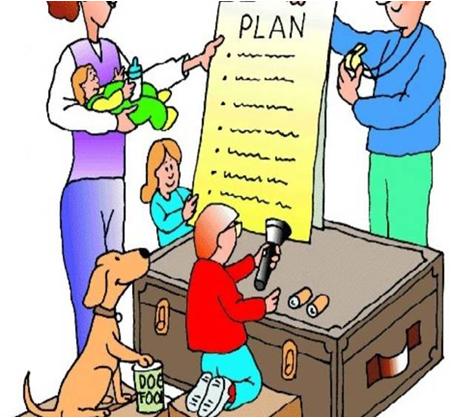How to Prepare Your Family for an Emergency Evacuation

Evacuations are real. They happen and people are forced to leave their homes at a very short time notice. The reasons for an emergency evacuation could be many. Mostly natural disasters like floods, hurricanes, earth quake while at times security issues also demand people to leave their homes and relocate. This could be temporary or permanent. Whatever the reason, preparing for an evacuation in emergency is a daunting task with a lot to do in a limited amount of time. Leaving your entire house is not an easy job. Our step by step guide might serve as the list of most important things.
Instructions
-
1
Make an emergency kit:
This kit should include important documents like passports, identity cards, insurance, credit cards and property records so that you can use them when needed. These papers are essential when you relocate somewhere else or even when your return after the danger is over. Also place medicines and pain killers in the kit. If you have young children, a packet of milk and some tinned or dried food can also be placed. Keep a family photography in case there are any losses and you need reference for a search. Also keep a radio powered radio in the bag so that you can listen to evacuation guidelines. However, make sure that the package is light enough to be carried. Keep the kit in the car. Keep the car gas full on days of expected evacuation. If you are not sure you would be able to take the car, keep it on the way to the exit from where it could be easily picked. The kit should be zipped and locked. -
2
Mentally prepare the children:
Talk to the children about the ongoing situation and why you have to leave your house. Comfort them by saying that you are going to return when things go fine and it is only temporary. Kids who know the situation well will not create a fuss and act right. -
3
Dressing:
Dress up everyone in simple but protective clothing. Wear shoes that are thick like joggers and will keep for long. There is no time to be fancy and only a practical approach will work. -
4
Communication plan:
Decide how to contact each other when the family gets separated. Children should know which relatives to contact when in emergency. Keep contact numbers in their wallets and also encourage them to learn by heart. To be on the safe side, keep the number of one out of state relative who is away from any sort of calamity. You can also sew contact numbers into the clothing of children but it is going to take you a lot of time. -
5
Store money and documents away from home:
If you are sure you will not have to leave the state, store money and copies of important documents in a place away from home where you get them after wards. This is could be with a friend or a bank locker. However, this is only possible if you have enough time. It is very much advised that you save a little every month for emergency days like these. -
6
First Aid:
Take your family to any first class in the town. This could be by the Red Cross or any private organization where they will be given the basics of first aid. -
7
Designate exit routes:
At home, draw a plan for exiting at short notice. Maybe the back door out of the kitchen is the shortest. Discuss with family members and draw a plan. Talk to your children's school and make sure your kids know the emergency exits at their school. Do the same for offices. Coordinate with the school to know their plan when an evacuation is ordered during school timings. Lock the main door properly while leaving your home so that your possessions remain safe until your return.







